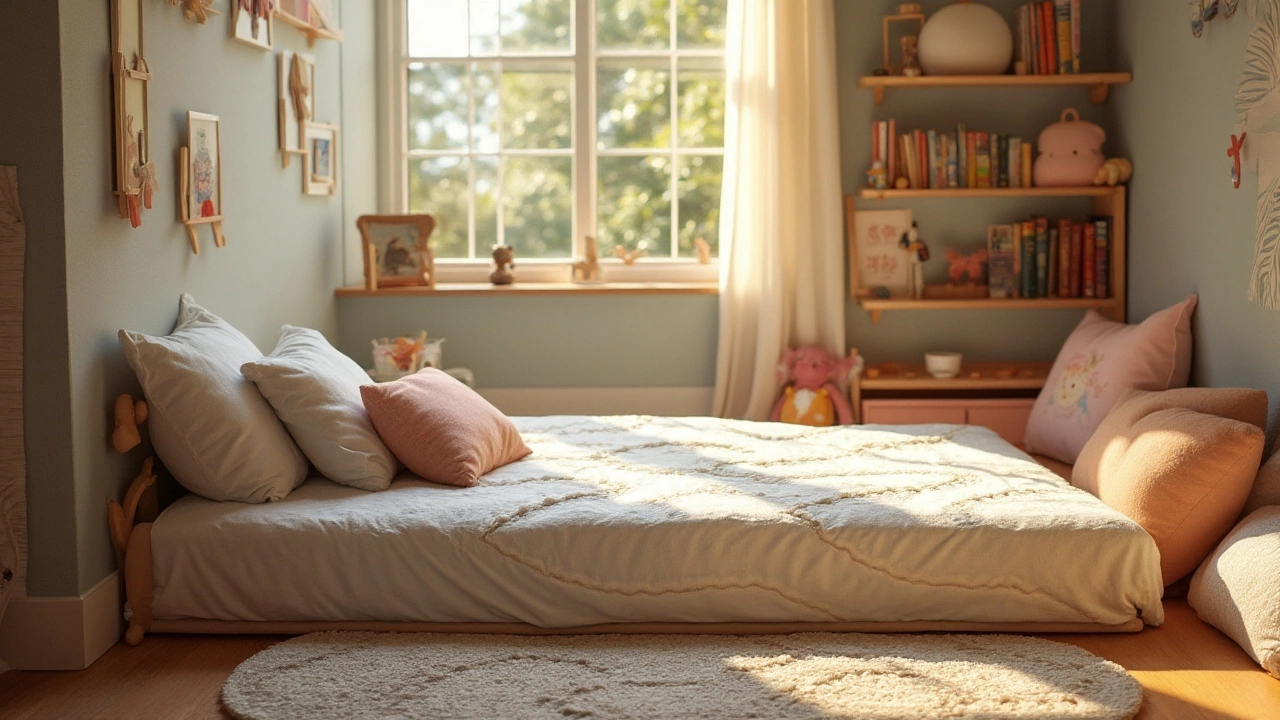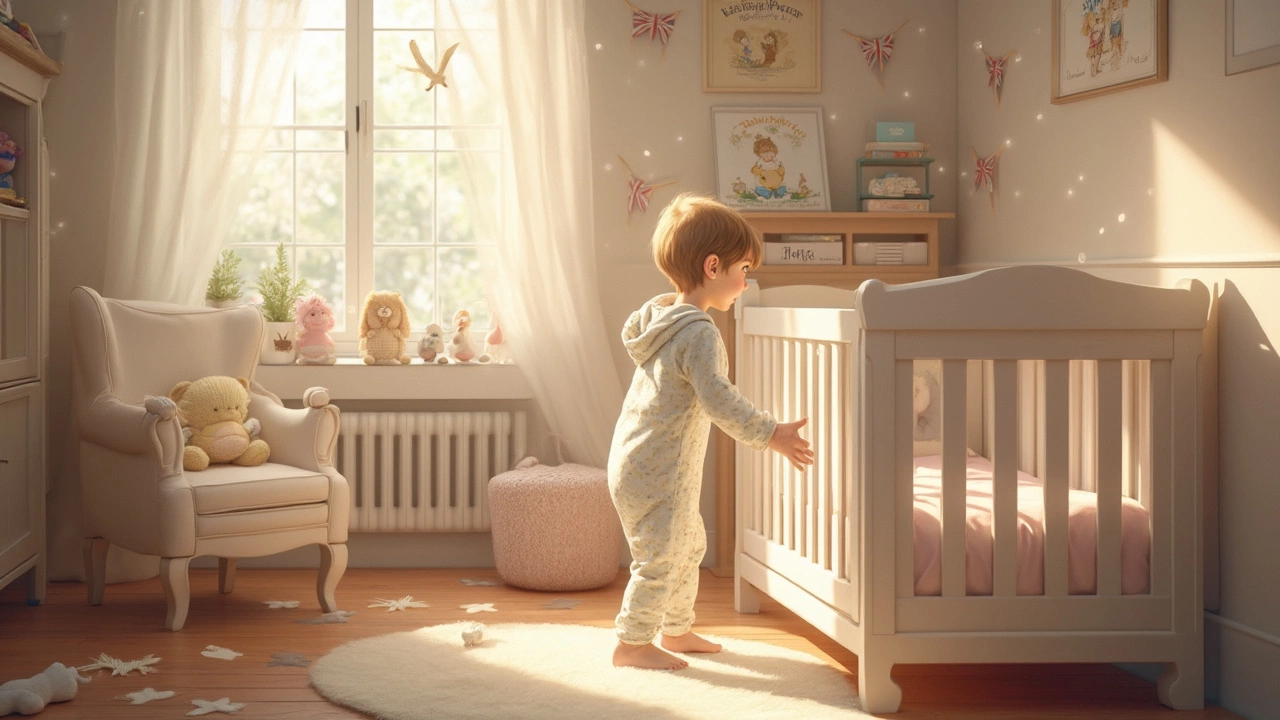Foam vs Spring Mattress for Toddlers: What’s Best for Kids’ Sleep and Growth?

It’s wild how a simple mattress can spark giant debates among parents. You’ve got the late-night Googling, the scrolling through parenting forums, and everyone pitching that one mattress brand they swear changed their kid’s life. "Just get the memory foam!" someone types, and then three comments down: "Springs are the only healthy choice!" As someone who has dragged Lucas into more mattress hunting trips than he ever wanted, I know this all feels so much weightier when it’s about your toddler’s sleep—and, let’s be honest, your own peace of mind.
What Makes a Mattress Suitable for Toddlers?
Kiddos grow faster in their sleep than during the day—that’s not just a wives’ tale. Scientists actually track growth hormone spikes during nighttime sleep, especially in children under 6. Because toddlers move a ton as they snooze, their mattress has to be more than just soft—it needs to support safe development. Let’s paint a clear picture of the must-haves here: a supportive surface, breathability, easy cleaning, and, probably most overlooked, a firm-enough feel that keeps a small body from basically sinking in like quicksand or bouncing around like a kangaroo. Pediatricians lean toward firmness to support spine alignment and reduce suffocation risks (yep, that’s still a thing for littles, especially those under age three). And it’s not just about back support—toddlers get up, jump, and sometimes turn their mattress into a landing pad.
Allergen resistance is another biggie. Foam can trap dust mites, but a zip-off washable cover makes all the difference. Spring mattresses with big open coils seem like they’d be airier—but if there’s cheap fiber padding on top, you might end up with a dust collector anyway. Of course, for very sensitive kids, some parents dig deeper, looking for OEKO-TEX or GREENGUARD certifications for chemical safety. Those can give you peace of mind about what your little one is inhaling as they drift off, but they don’t automatically mean a mattress is more or less supportive or comfy.
Durability, though, is where things get interesting. No one wants to buy a new mattress every two years—and trust me, a soaking wet bed after a flu night will test any promises on the tag. Water-resistant covers save you, and denser foam or high-quality springs bounce back longer against the potty-training drama. In this stage, you want something you can actually clean and keep looking (and smelling) fresh after a surprise midnight accident. Don’t ignore edge support, either: toddlers nap on the weirdest stretches of their mattress, and a flimsy edge can turn bedtime into a slapstick routine more than once.
Breaking Down the Differences: Foam vs Spring
So, what’s the real scoop on foam versus spring mattresses for toddlers? Here’s where it gets fun, because each type has quirks that make it shine—or flop—depending on your kid and your home.
Foam mattresses usually mean memory foam, high-density polyurethane foam, or the newer "eco" foams (which, just so you know, often aren’t fully plant-based). They’re famous for contouring to a body’s curves. Some brands claim that helps with pressure relief, but for tiny bodies, pediatric sleep specialists often suggest you stick with medium-firm to firm. Too much give is risky, since a toddler’s head is big compared to their body and can sink lower than is safe. Dense foam tends to trap less dust than loose fiber batting, but cheaper foams off-gas VOCs (volatile organic compounds–basically, chemical smells) like air freshener gone wrong. If you open a new foam mattress and the smell stings your eyes or nose, it’s usually a red flag. Look for certifications like CertiPUR-US to dodge the worst of those chemicals.
Now, spring mattresses (also called innersprings) are like what most of us slept on as kids—rows of coiled steel, usually padded with foam or cotton. The bounce is real: toddlers trying to turn or get up can find it easier since springs revert right away as they move (that’s called "responsiveness"). They’re naturally well-ventilated, so you don’t get that stuffy, hot feeling as much—helpful for sweaty sleepers. But cheaper springs can "poke" through thin padding faster, and if the edge isn’t reinforced, your toddler will find new and creative ways to roll off or get stuck. Pocketed coils (each spring in its own fabric pocket) are less squeaky and help dampen movement, but are rare at the low-end kids’ mattress price point.
Let’s get concrete. Here’s a quick table to line up the pros and cons side by side:
| Feature | Foam Mattress | Spring Mattress |
|---|---|---|
| Firmness | Usually can choose; denser foam is firmer | Depends on coils and padding; can vary a lot |
| Breathability | Retains more heat; some open-cell foams are better | More airy, natural heat dissipation |
| Support | Even contour, less bounce | Better bounce and responsiveness |
| Durability | High-density lasts longer; low density compresses fast | Good if coil count is high & padding thick |
| Allergy Risk | Foams can resist dust mites if covered | Open coils reduce moisture, but fiber pads can trap dust |
| Safety | Too-soft=hazard; look for certified foams | Look for reinforced edges & strong materials |
| Cost | Usually less expensive | Price jumps with quality coils |
Plenty of brands try hybrid mattresses (foam over springs) as a compromise, but these can get pricey fast. Choose what matters most: safety, how cool your child sleeps, and how long you want this mattress to last through sibling hand-me-downs.

Mattress Myths (And What Parents Actually Need)
There’s no faster way to start a debate than to mention kids’ sleep in a playgroup. Seriously, some parents will fight to the death for their favorite mattress material. Here are some beliefs that show up everywhere—and what’s actually true:
- Memory foam is always too soft for toddlers. Not quite. Regular memory foam can be plush and risky for littles, but high-density foam with the right firmness is often safer than a bargain coil mattress.
- Spring mattresses are more breathable, so my child will never overheat. They do let more air through, which helps, but if there’s a thick, cheap synthetic top layer or plastic-y cover, your child could still get sweaty.
- Foam always smells bad and is unsafe. Low-cost foam *can* stink and off-gas. But top-rated children’s foam mattresses with CertiPUR-US labels or similar are well-tested and have strict chemical guidelines.
- All toddler mattresses are the same size. Not true—measure your toddler bed, and watch out for a few centimeters of difference. Too-snug mattresses are a pain, but too-small ones leave unsafe gaps for little arms or heads.
- Firm = uncomfortable. That’s a grownup myth. A toddler’s developing body needs much firmer support than we crave as adults. Soft mattresses can actually make their sleep choppier and increase risk if the child sinks in too far.
What matters? Skip the hype, read labels closely, and actually press down on demo mattresses with your hand (or your own weight, if you’re not embarrassed juggling it in the store). If it gives in more than a couple of inches under pressure, it’s likely too soft. Don't forget to double-check for squeaks and edge collapse—you'll hear about it quickly, especially when your child starts vaulting out of bed at 6 am.
Choosing the Best Mattress for Your Toddler’s Needs
Decision time. Here’s how parents—myself included—have learned to cut through the noise when shopping for the best mattress for a toddler. Don’t stress the science; focus on practical questions:
- How mobile is my child in their sleep? Is your toddler an Olympic bed gymnast, or do they sleep peacefully on one spot? Frequent movers usually do better with a spring mattress since it doesn’t "hug" the body and lets them reposition easily. Quieter sleepers can benefit from denser foam, as long as it’s still firm.
- Does my home run hot or cold? Toddlers who sweat buckets will feel better on a spring mattress or a perforated foam mattress with breathable covers. Some newer foam models actually have small air pockets or gel infusions to keep things cool, but don’t expect miracles.
- Allergies or asthma? Both foam and spring can work if you use dust-mite-resistant covers. But avoid fillings made of wool or cotton if your child reacts to natural fibers. Regular sheet washing is the real gamechanger, though—not just marketing claims.
- How long do I want this mattress to last? If you’re hoping to pass it down, pick denser foams (at least 1.5-2 lbs per cubic foot density) or springs with reinforced edges and deep comfort layers. If it’s just for a year or so until they outgrow the bed, don’t overthink it.
- Easy to clean? Waterproof or water-resistant covers can be lifesavers. Some higher-end foam and innerspring mattresses even come with zip-off covers that survive hot washes.
Price shouldn’t be your only guide—a study published by Sleep Foundation in early 2024 found that price and mattress material aren’t directly linked to better toddler sleep scores. Firmness, cleanliness, and the right size matter much more than brand. Ask around in your parent circles, poke around in store displays, and trust your gut (and hands) more than just online reviews. Yes, your child may end up face-down drooling on that mattress, so make sure it’s sturdy, safe, and—ideally—easy to love, too.
If you’re looking for a quick answer, most pediatricians still recommend a firm, supportive mattress—either high-density foam or a quality spring. Always check for certifications, make sure the cover is spill-resistant, and, if your child is sensitive, lean toward naturally hypoallergenic materials. And for parents like me who sometimes climb into their toddler’s bed during night terrors, a mattress without squeaks and pokes is, frankly, a blessing you don’t skip over.
Every toddler’s sleep story is unique. Some will snooze on anything, and some will wake at the tiniest crinkle. By picking the right mattress for your child’s body (and a few real-life messes), you’re giving them one of childhood’s greatest gifts: safe, sweet, and solid sleep.


